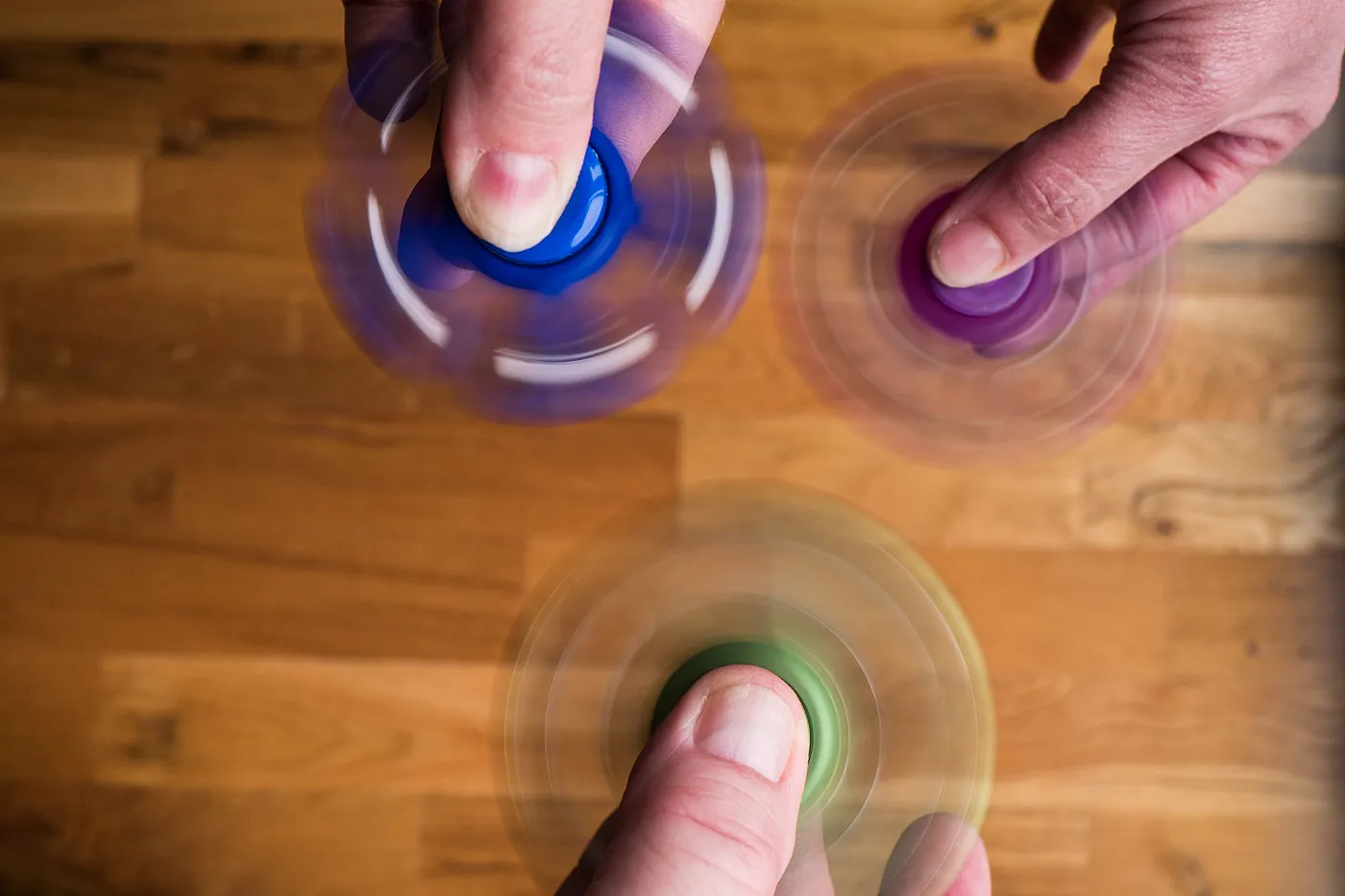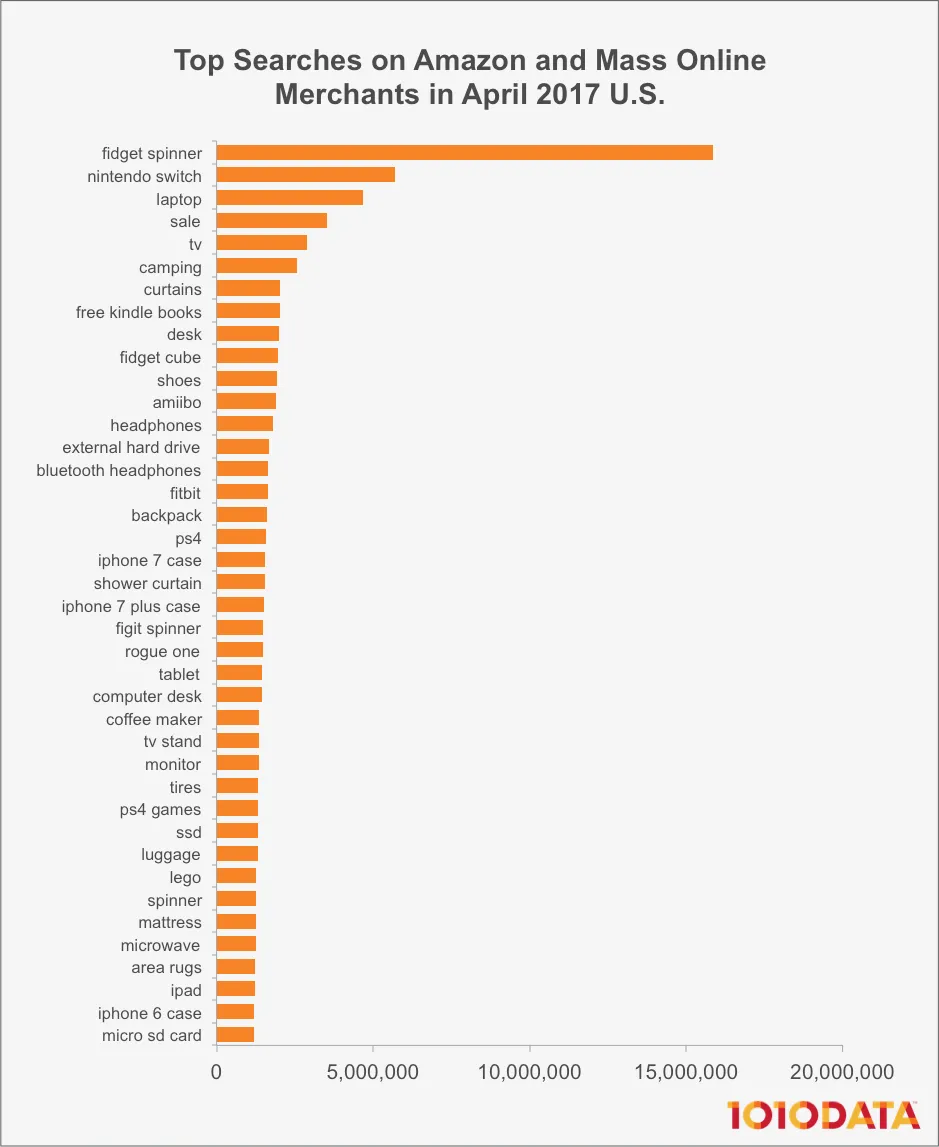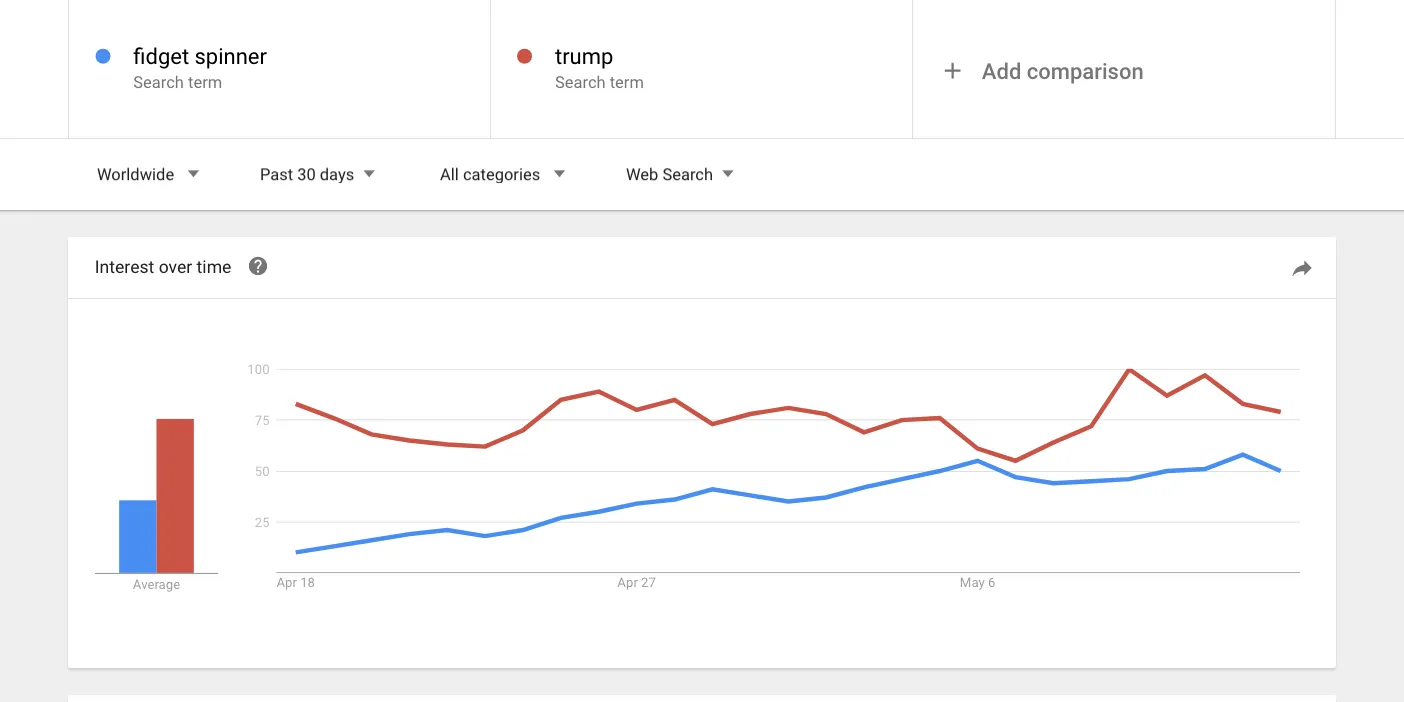Last Updated on August 31, 2023 by David

The “fidget spinner” or sometimes known as the “finger spinner” is undoubtedly the hottest toy so far in 2017. This ultra simplistic yet alarmingly addictive toy, originally designed for kids and adults with ADHD, has singlehandedly turned eCommerce, marketing, branding, and manufacturing into a viral meme, selling out wherever they crop up.
Being more popular than Star Wars, Marvel, and even Disney branded toys, fidget spinners are already creating controversy among parents, teachers, and doctors. That’s elite status any brand would kill to achieve. More importantly, the fidget spinner has proven that a product does not need to be useful as long as it can generate enough interest. And that accessibility through simplicity and curiosity is often greater than the sum of its parts.
Interestingly enough, fidget spinners don’t even have a brand. There’s not a single company that dominates a market for fidget spinners under a brand like Nike or Apple. There’s no major distributor for fidget spinners either. And although eCommerce giants like Amazon and Walmart control the majority of searches and sales of fidget spinners, these toys sell just as well via street vendors, SMB eCommerce stores, and local mom-and-pop shops. We’ve got 8 of them here in the Reamaze office…

In fact, these spinners sell so well everywhere that they’re considered the
Fastest Growing Product Online Ever, Grows 2000% in 3 Months to Over $25M in Online Sales — 1010Data.com
Looking at Google Trends for the past 30 days, fidget spinners generate about as much interest as America’s favorite celebrity, President Donald Trump, and that’s saying something. On Amazon.com, 18 of the top 20 best-selling toys and games were fidget spinners.

So why are fidget spinners and other related toys like the fidget cube so popular? Are they a fad where demand for them will dwindle in mere months? Other than helping kids and adults with ADHD reign in the desire to fidget, what other value does it deliver? Does it even need to?
Here’s the thing you need to know about this toy — it is a phenomenon. — Kelly McEvers, NPR News.
What eCommerce businesses need to understand is that there’s more than one way to create a product or brand. The fidget spinner phenomenon isn’t new but we have come a long way in terms of eCommerce manufacturing, distribution, and marketing. If you were young (or old) enough to remember toys that achieved similar “fad” status like the fidget spinner, you’d remember toys like Pog, Tamagotchi Pet, and of course, Tickle Me Elmo. Aside from being toys, these products served no real purpose or value but were able to generate vast amounts of interest even while there were other toys that clearly delivered more “toy per dollar”.
The fidget spinner is a meme or a viral video of the eCommerce world, a toy that has achieved the most simplistic form of appreciation for any product for sale: curiosity. And like memes and viral videos, fidget spinners attract purchaser attention with extremely low bars to entry among kids and adults. With a “history” grounded in facts (that they help kids and adults with ADHD), the fidget spinner also has inherited street cred when it comes to justifying its purchase.
Some key markers that make fidget spinners great:
- They are simple for both adults and kids
- They offer tons of customization and designs
- The majority of spinners are cheap and lend well to repeated purchases
- They’re small which makes them easily consumable anywhere (like memes, gifs, and viral video clips)
- People like to fidget and the value proposition is immediately relevant
 via GIPHY
via GIPHY
Meme-ification of Interest Generation
A crucial aspect of the fidget spinner’s groundbreaking success is deeply rooted in how people are discovering new goods and services online. As social commerce continues to advance, interest trends have a high correlation with the ability for eCommerce businesses to connect with their shoppers on their preferred social media platforms; and there are plenty to pick from: YouTube, Instagram, Facebook, Twitter, SnapChat, Pinterest, and many more.
According to an eCommerce trend study for 2017 and beyond published by BigCommerce:
30% of online shoppers say they would be likely to make a purchase from a social media network like Facebook, Pinterest, Instagram, Twitter or Snapchat. — BigCommerce
and that
51% of Millennials would be likely to make a purchase over social media. — BigCommerce
The fact that fidget spinners succeed even without a brand is exactly why it has turned into a meme-ified product that everyone wants, especially across social media. Traditionally, brands succeed only when they’re able to find a breakthrough in culture. Successful brands utilize a set of techniques designed to generate cultural relevance among their products and their buyers. By not having a brand and merely being interesting enough to the masses, fidget spinners immediately leapfrog many products when it comes to interest-generation.
These toys didn’t become interesting through branded content or creative storytelling (all techniques used in content marketing) but merely by being interesting. When you extrapolate all this interest, untethered from all branding, across social media, the fidget spinner becomes an instant meme where friends and family are more than willing to like, share, tweet, and ultimately buy, over social media.
Meme-ification of Subcultures
Fidget toys define the essence of subcultures. Having started out life as a legitimate pieces of equipment to help with focus and attention, fidget toys mostly went unnoticed over decades past. But with the flourish of the aforementioned interest-generation culture over social media, manufacturing, and distribution, even simple toys can experience a vibrant subculture not unlike those of the espresso, artisan cheeses, vintage port wines, model aviation, mechanical watches, 3D printing, Japanese anime, K-Pop, fruit canning, and homeschooling. Their similarities? All extremely interesting things that can potentially captivate even the most unaware of consumers.
 via GIPHY
via GIPHYFast paced manufacturing, profoundly new ways to distribute worldwide, and limitless access to social media has completely democratized these subcultures. With a few clicks, you can jump into the center of any subculture, and participate in intense conversations and interactions that connect people seamlessly technologically, physically, and mentally. Fidget toys exemplify all of these traits and bypass common branding and sales philosophies.
Taking advantage of trends
Brands looking to differentiate themselves from the rest have a lot to learn from the fidget spinner phenomenon. Even if it is a temporary fad like Tickle Me Elmo, the fidget spinner took on a life of its own and amazed/surpassed branded toys with a clear goal of disrupting sales. An underdog if you will in the strictest sense of the word.
There’s no guarantee that you’ll create the next fidget spinner or even something close to the fidget spinner but businesses must think outside the box when it comes to creating products and brands that disrupt traditional conventions, a term that Harvard University’s Douglas Holt coined the “cultural orthodoxy”. When big brands come together to create products, they use streamlined and repeatable processes and ideologies which ultimately produce cultures grounded in orthodoxies. These represent opportunities for new and upcoming businesses to disrupt.
By learning to map out cultural trends in eCommerce, businesses generate more capacity in uncovering cultural opportunities where the next subculture may reveal itself. A great example Douglas Holt always migrates to is the up-coming of Chipotle:
A massive cultural movement had organized around the revival of preindustrial foods… Chipotle succeeded because it jumped into this subculture and took on its cause. Chipotle promoted preindustrial food ideology with two films. In 2011 the company launched Back to the Start, an animated film with simple wooden figures… The second film, The Scarecrow, parodied an industrial food company that branded its products using natural farm imagery… Both were extremely influential, were watched by tens of millions, generated huge media hits, and helped drive impressive sales and profit gains. Each won the Grand Prix at the Cannes advertising festival… Chipotle’s films are wrongly understood simply as great examples of branded content. They worked because they went beyond mere entertainment. But they exploded on social media because they were myths that passionately captured the ideology of the burgeoning preindustrial food subculture. — Douglas Holt in The Harvard Business Review
The level of interest you can generate to your brand may vary. Some will be successful, some won’t and anything can happen between fidget spinner status and Chipotle status. Regardless of what is ultimately achieved, you need to continuously test your audience’s interests beyond traditional conventions. The fidget spinner is both a meme and a subculture. The product itself might go away by year’s end but its legacy as a subculture with profoundly impactful cultural relevance is something any business can aspire to. And maybe, just maybe, your next breakthrough product doesn’t need a brand or even need to be useful. It merely needs to be interesting enough.
Interested in what else we have to say? Make sure to recommend this article by clicking the heart and follow us for more stories about startup life, customer service, and tips on treating customers right.
You can also find our multi-brand, multi-channel customer service platform at https://www.reamaze.com. Follow @reamaze.

